You may have spent many happy hours exploring Gozo’s coastline, beaches, and churches. But there’s always more to Gozo than everyone thinks. Even if you’re a regular visitor to Gozo, the island can still offer surprises.
In this blog post we take a look at five hidden gems on Gozo, things that you might not have heard of and need to put on your list of things to see (and post on Instagram!) the next time you visit our lovely island.
Gozo’s ancient graffiti
Graffiti is not a new phenomenon, and doesn’t always involve colourful spray paint. And here on Gozo we can prove it. If you look carefully, you’ll be able to spot scratched markings in stone at some of our most famous attractions. We call it historical graffiti.
You’re bound to visit the Citadel in Victoria during your visit to Gozo. If you’re exploring the museums there, make sure you visit the Old Prison, as it houses what is thought to be one of the largest collections of historical graffiti in the Maltese Islands.
Built by the Knights of St John in the 16th century, the prison was in constant use from then up until the early 20th century. Covering the walls of the cells and corridors you’ll see hands, names, initials, Maltese crosses, and many images of ships all carved into the soft limestone walls.
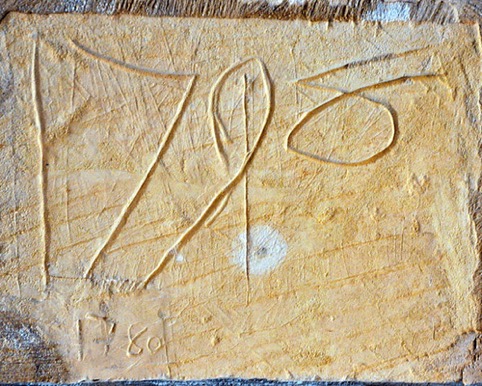 1798 graffiti found at the old Prison, Gozo. Photo credit: heritagemalta.org
1798 graffiti found at the old Prison, Gozo. Photo credit: heritagemalta.org
The graffiti help to tell a fascinating story of Malta and Gozo’s history. The image above shows the year 1798 carved in the wall. This date has great significance as this was the year that Napolean defeated the Knight’s of St John and captured Malta while en route to Egypt during the Revolutionary Wars.
Also within the Citadel, there is a piece of graffiti worth seeking out on the walls of Gozo Cathedral. It depicts a Russian ship and dates from the late 18th century when the Maltese helped Catherine The Great fight against the Ottoman Empire in the Mediterranean.
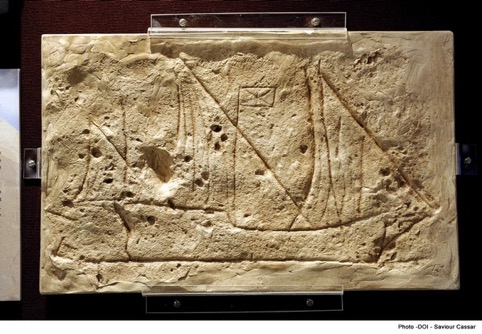 18th century graffiti of a Russian ship seen at Gozo Cathedral. Photo credit: gozonews.com
18th century graffiti of a Russian ship seen at Gozo Cathedral. Photo credit: gozonews.com
You may well have visited the neolithic Ġgantija Temples UNESCO World Heritage site near Xaghra, which date back an astonishing 5,500 years. But did you spot the graffiti scratched there more than 150 years ago?
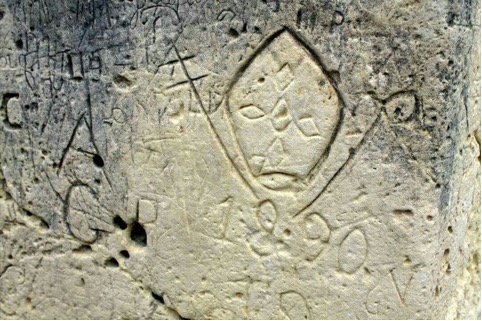 Historical graffiti at the Ġgantija Temples in Gozo. Photo credit: Twitter @Timetoblog
Historical graffiti at the Ġgantija Temples in Gozo. Photo credit: Twitter @Timetoblog
In the past, visitors to the site were not so respectful of the heritage of the Ġgantija Temples and began to scratch their initials and dates into the rocks. It is clearly something that shouldn’t be done today – and a couple who tried to do just that were caught and prosecuted in 2016. So the message here is – admire the graffiti but don’t add to it!
More historical graffiti can found at the Chapel of the Immaculate Conception near Qala. This beautiful church, which dates back to the 16th century and is well worth a visit. While you’re there, look out for old graffiti showing sailing vessels on the chapel walls. It is thought that seafarers used to scratch the images as ex voto offerings, hoping that it would ensure safe passage on their voyages.
Prehistoric ruins at Ta’ Cenc, Gozo
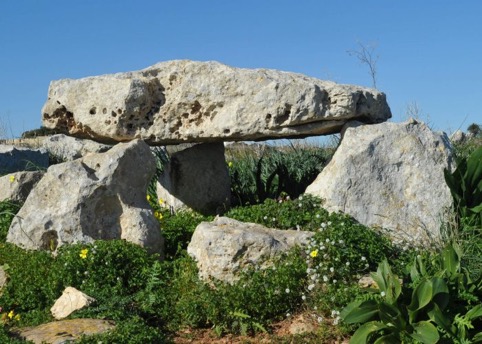 Prehistoric tombs at Ta’ Cenc, Gozo. Photo credit: visitgozo.com
Prehistoric tombs at Ta’ Cenc, Gozo. Photo credit: visitgozo.com
The Ġgantija Temples are not the only site of ancient cultural interest on Gozo. At the southern end of the island, near the towering cliffs at Ta’ Cenc, you can find three prehistoric tombs that are believed to date back to the Early Bronze Age, around 2,500-1,500 BC.
And you won’t just find tombs at Ta’ Cenc. The plateau here also features about a kilometre of mysterious ancient (Bronze Age) tracks, believed to be cart ruts worn into the soft limestone.
Underground caves in Xaghra, Gozo
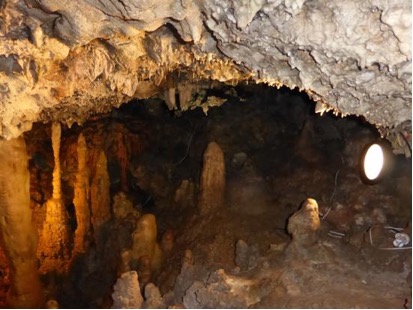 Calcified formations at Ninu’s Cave, Gozo. Photo credit: TripAdvisor
Calcified formations at Ninu’s Cave, Gozo. Photo credit: TripAdvisor
A great way to escape the summer heat in Gozo and to explore some underground hidden gems is to head for the village of Xaghra where beneath two ordinary homes you will find Xerri’s Grotto and Ninu’s Cave.
Discovered underneath a house in 1924, Xerri’s Grotto features various calcified formations such as stalactites and stalagmites and is accessed via a 10m spiral staircase. Ninu’s Cave was first discovered in 1888 by local resident Joseph Rapa. The cave, like Xerri’s Grotto features an abundance of stalactites and stalagmites.
The view from the Watchtower at Dahlet Qorrot, Gozo
Situated on a the cliffs between San Blas Bay and the fishing village of Dahlet Qorrot, is a watchtower – The Isopu Tower. It’s well worth the walk from either side to reach the top as you will be greeted with one of the best views on Gozo.
The Isopu Tower (also known as San Blas Tower was built in the 17th century as part of the Gozo’s coastal defences. If you’re lucky the Tower might be open (usually the first three Sundays of each month) and you can get an even better view from the roof!
Old boathouses at Dwerja Bay, Gozo
Gozo is a photographer’s paradise with stunning scenery, magnificent churches, breathtaking views and lots of sleeping cats.
There is beauty everywhere if you look for it. And if you’re an enthusiastic Instagrammer, Gozo offers plenty of opportunities for great shots. Some hidden gems we’d recommend are the old boathouses that can be found in Dwerja Bay, close to where the iconic Azure Window once stood. The worn stones, peeling paint and atmosphere make a great backdrop for a selfie or two!
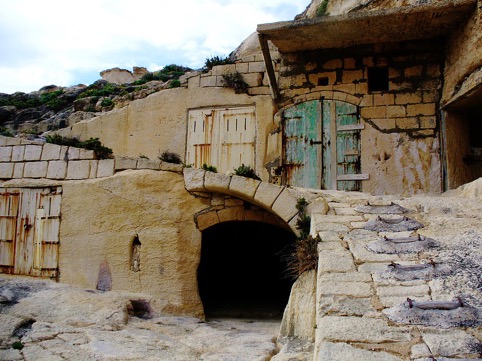 Old boat houses at Dwerja Bay, Gozo. Photo credit: grumpycamel.com
Old boat houses at Dwerja Bay, Gozo. Photo credit: grumpycamel.com
Ask us for help
Baron Holiday Homes is happy to organise car hire, tours of Gozo, and special activities for our guests whatever time of year you visit. Just get in touch and we’ll tell you all you need to know about walks near to your rental property, special events in villages nearby, and other local information.
Posted in Activity, Architecture, Heritage, Things to do
View all blog posts